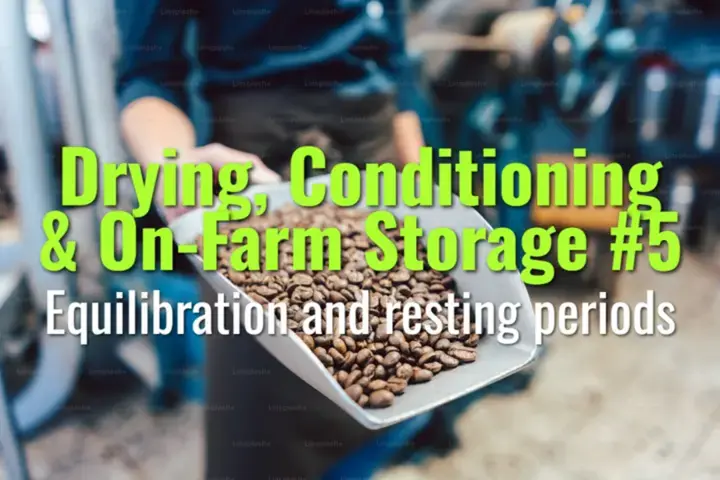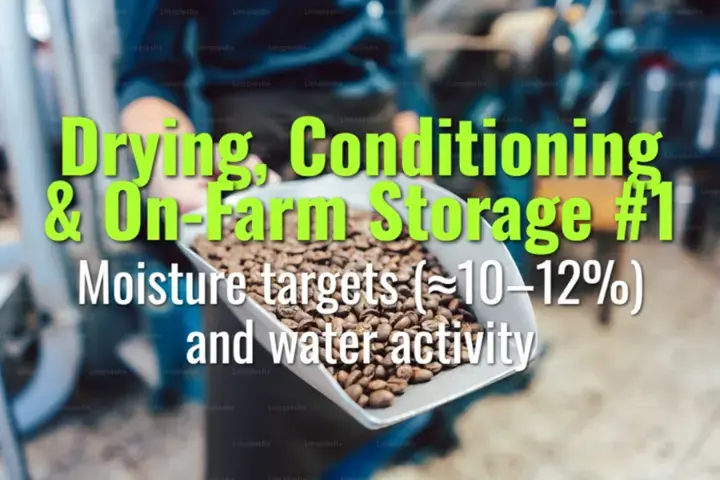
Equilibration and resting periods
This topic explains equilibration and resting periods in parchment coffee storage, how they stabilize moisture and flavor, and why they are essential before hulling and export.

This topic explains equilibration and resting periods in parchment coffee storage, how they stabilize moisture and flavor, and why they are essential before hulling and export.

This topic explains the importance of hitting correct moisture content and water activity targets in coffee drying, why they matter for stability and quality, and how farmers measure and manage them.

This topic explains hybrid honey processing protocols that incorporate soaking steps, how they blend aspects of washed and honey methods, and their impacts on flavor, cleanliness, and market differentiation.

This topic explains the color-coded honey process variants—white, yellow, red, and black—how they differ in mucilage retention and drying practices, and how these differences influence flavor outcomes.

This topic explains how lots are built and graded in natural (dry) coffee processing, why these steps are critical for consistency, traceability, and market classification, and how they influence final value.

This topic explains how traceability is maintained during wet processing, from cherry reception through fermentation tanks, ensuring transparency, quality control, and market value.